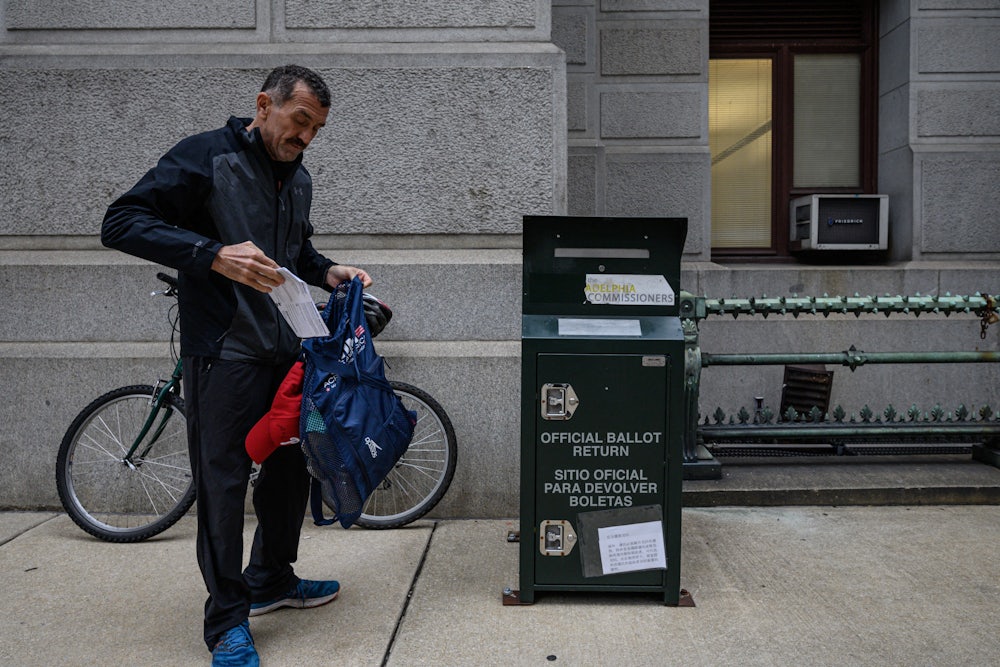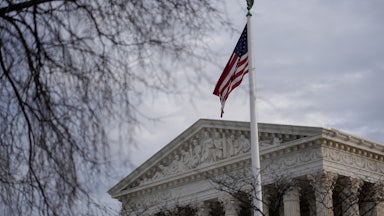It’s almost Election Day, and everything is on fire …
Which is, frankly, normal. Particularly since 2016, every Election Day feels a little more urgent these days than it used to.
But not all fires are created equal. Federal elections are your ordinary, throw-a-match-on-something-soaked-in-gasoline fires: straightforward, each a little different but fundamentally operating under the same set of rules and norms. State-level elections, however, are coal-seam fires burning deep underground: more difficult to see and keep track of but with the power to fundamentally change how ordinary humans live their lives for many years to come.
State legislatures have an outsize impact on Americans’ lives; if there’s an issue you care about, your statehouse member has passed a law impacting it—education, traffic, environmental protections, gun safety, health care, the economy, voting rights, reproductive freedom—well, you get it. While legislation often takes months or even years to make its way through Congress, any given state’s legislature passes anywhere from dozens to hundreds of laws each year. Further, the aftermath of the 2020 election revealed the extent to which some lawmakers are willing to go to usurp the will of their states’ voters in service of installing the candidate of their own choosing. Dozens of legislators across the country participated in either attempts to overturn the 2020 presidential election results or the January 6, 2021, riot. Hundreds more of these election deniers are on the ballot this year, and they’re certain to be a threat to free and equal elections in 2024.
Fittingly, the home of the most disastrous coal-seam fire in our nation’s history is also one of the top priorities in the state legislative landscape this year: Pennsylvania.
The Keystone State is one of the few swing states where Democrats have non-GOP-gerrymandered legislative maps for the first time in decades, though the road to the majority in both the state House and Senate remains pretty steeply uphill; flipping these chambers from Republican to Democratic control is likely to be a two-cycle endeavor.
Specifically, Democrats need to flip 12 seats (of 203) in the House to win majority control of that chamber. The Pennsylvania Senate has staggered terms, and half of the upper chamber’s 50 seats are on the ballot in November; Democrats need to flip four of them to win a majority.
Speaking of states with freshly un-gerrymandered maps, Michigan is another where Democrats are positioned to make significant gains this year. Thanks to a successful 2018 citizen-initiated ballot measure that created an independent redistricting commission, Democrats have a solid shot at flipping at least one chamber—and possibly even both!—of the GOP-controlled Michigan legislature for the first time in a decade.
Democrats need to flip just two House seats (of 110) to take control of that chamber, and flipping four state Senate seats (of 38) would give Dems a majority there.
Arizona is another state where Democrats appear poised to flip one or both legislative chambers, but here, looks are somewhat deceiving. Dems need to flip just two seats (of 60) in the state House to take majority control there, and flipping just one seat in the Senate would break the Republican majority and tie the chamber 15–15.
The path to majority control of either chamber is narrower than it appears, however; just a few of the districts on the state’s new legislative maps are considered competitive, and since districts in Arizona are nested (two House seats and one Senate seat within each), two or three competitive districts comes out to four to six competitive House seats and two to three competitive Senate seats. Democrats absolutely have a path to a majority in both chambers, but it’s narrower than it appears.
Minnesota is a state attracting almost no national attention this year in terms of federal or statewide races, but for folks who work in and around statehouse elections, the North Star State is a top priority. As it’s one of the few states with a divided legislature—Democrats control the House, Republicans control the Senate—both parties have a lot to gain from both protecting and flipping a chamber. If Democrats hold onto the governorship and the state House, they have a chance to pick up a governing trifecta here by flipping the state Senate.
Netting two state Senate seats (out of 67) would give Democrats control of that chamber and a shot at full control of state government. The 134-member House chamber is currently split 69 D, 63 R (plus one independent and one vacancy). Republicans need a net gain of at least four seats to win majority control.
The final state of the top five is Nevada, where national politicos are in a full-on frenzy over federal and statewide contests—Republicans smell blood in the water, and Democrats are the chum. Democrats currently have full trifecta control of government in the Silver State (governorship, state Assembly, state Senate), and Republicans are itching to blow it up. The Nevada Senate is especially vulnerable, since Republicans only need to flip two of the 11 seats on the ballot this November (terms here are staggered—the other 10 members are up in 2024). The battle for chamber control is a tougher one for the GOP in the Assembly, as they’ll need to flip five of those 42 seats to win the majority.
Now Pennsylvania, Michigan, Arizona, Minnesota, and Nevada aren’t the only states with watch-worthy legislative races, but the possibility of shifts in majority control elevates them to the top of any smart list. If you’re really looking to expand your horizons, however, Maine, Colorado, Wisconsin, and North Carolina should absolutely be on your radar. But when everything’s on fire, it’s only natural to conserve one’s water—er, attention. No matter where you live or what you care about, a lot of elections are happening at every level of the ballot that will have tangible impacts on your life.
It’s easy to keep an eye on the big, bright, smoky fires. And arguably, they’re easier to douse—or, to rein in this tortured conceit, it’s easier to hold these officeholders accountable and even flip these seats in two, four, or six years. The coal-seam fire of statehouse races, however, is coming straight off a round of redistricting that has likely cemented legislative chamber control for one party or the other (more for Republicans than Democrats) for the next decade. This list isn’t short due to any desire for brevity; it’s simply where we are now in terms of legislative chamber competitiveness. General lack of attention and resources (from Democrats, especially) is likely to keep this list short over the next several election cycles. But maybe, just maybe, more folks will start to notice this dangerous fire of GOP statehouse hegemony burning beneath our feet.










